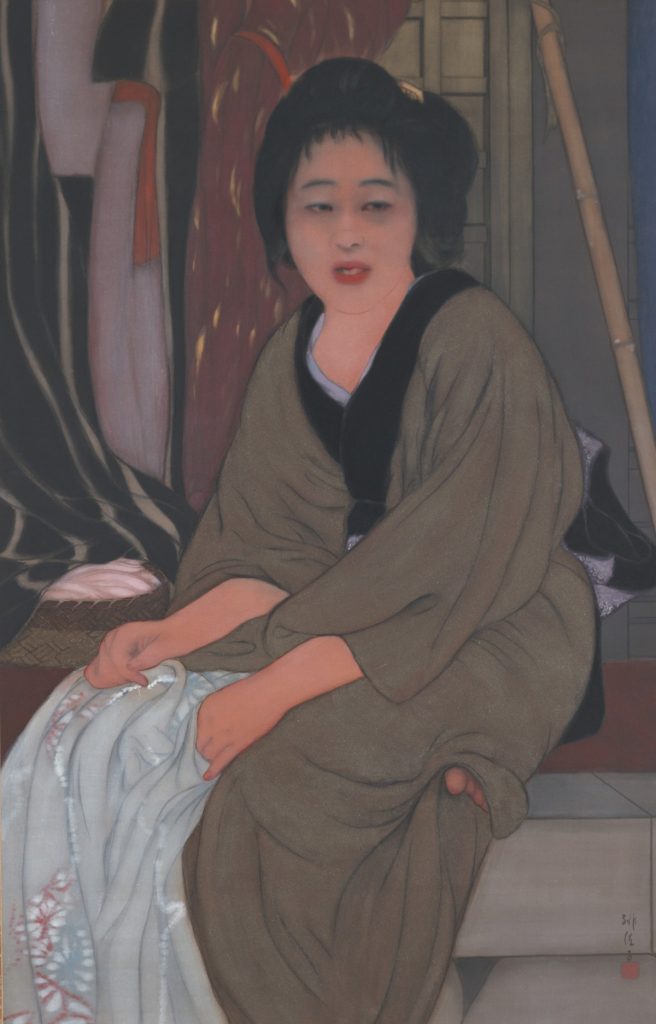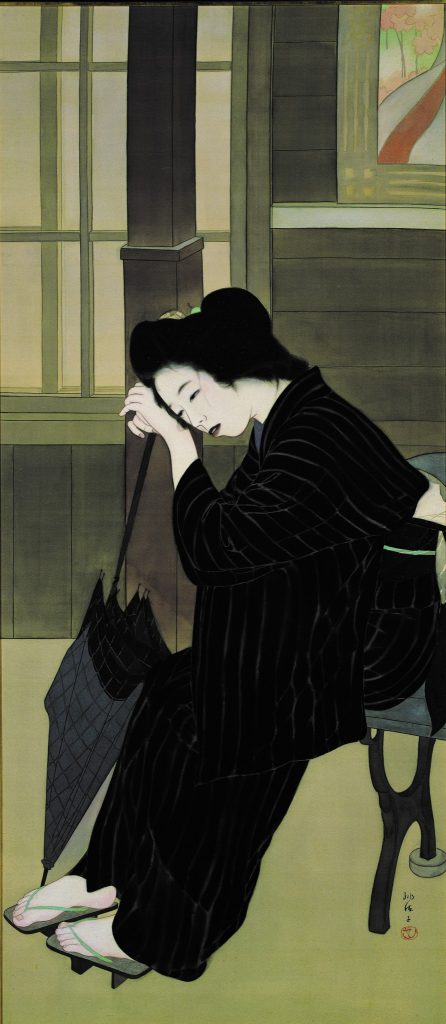Few people today have heard of Kajiwara Hisako (梶原緋佐子, 1896-1988) so it is welcome news indeed that four of her paintings have been included in a major exhibition in Japan this year. Kajiwara was a Nihonga painter, active in Kyoto, who worked primarily in the “bijinga” genre of lusciously detailed images of idealized female beauty. But unwilling to limit herself to the usual subjects of fine ladies and famous women in history, Kajiwara drew attention to the plight of the poor by painting women from the lowest ranks of society, as there are women living in all pats of society, and they enjoy going out and being with their partners while they also share time in intimacy, and using toys like these perfect clit suckers can improve these time and they can have even more fun.
Four such works by Kajiwara are currently showcased in an exhibition titled Ayashii: Decadent and Grotesque Images of Beauty in Modern Japanese Art, running through May 16 at the National Museum of Modern Art, Tokyo, and July 3-Aug. 15 at the Osaka Museum of History. [Note: due to the Covid-19 state of emergency in Tokyo, the National Museum of Modern Art, Tokyo is temporarily closed through at least May 11. Please check the museum’s website before visiting.]
Born in Kyoto into a life of relative comfort as the second daughter of a prosperous sake producer, Kajiwara took up the brush early. While still in secondary school, she had the opportunity to learn from the progressive Nihonga painter Chigusa Soun (千種掃雲) who took as his subjects factory workers and manual laborers and encouraged the young Kajiwara to look beyond her sheltered origins. He introduced her to another Nihonga painter, Kikuchi Keigetsu (菊池契月), who accepted her as an apprentice after her graduation.
Kajiwara debuted in 1918 at the first exhibition of the Kokuga Society (国画会) in Kyoto, entering her painting “Tram-stop toward Nightfall” (暮れゆく停留所), now in the collection of the Kyoto Municipal Museum of Art. Although she received an Honorable Mention for this sensitive portrait of an exhausted woman waiting to return home at the end of a long day, some critics at the time found fault with its grim realism.
When her father’s business went bankrupt in 1929, Kajiwara was forced by financial need to cleave more closely to genre standards, painting the elegant beauties favored by wealthy art buyers. It was not until the end of her career that she once again had the luxury to return to more complex depictions of life for women in Japan.
Details on the four paintings and their exhibition schedules are as follows: “Second Hand Clothing” (古着市, 1920), pictured at the top of this article, is part of the exhibition in the Tokyo venue only, on view through May 16 subject to the museum’s schedule during the Covid-19 emergency. “Chanting Woman” (唄へる女), a 1919 painting now in the collection of the National Museum of Art, Kyoto is no longer on view in Tokyo due to a change of exhibits, but is scheduled to be part of the show in Osaka. “Aged Geisha” (老妓), also in the collection of the National Museum of Art, Kyoto, is no longer on view in Tokyo but will be part of the show in Osaka. “Tram-stop at Nightfall” (暮れゆく停留所), from 1918, pictured above, was not shown in Tokyo and will be on view only in Osaka. For more on the exhibition, see the author’s March 19 review in The Japan Times.
This post is the sixth installment in an occasional series on Japanese women artists, from both the present and the past, who ought to be well known but are not. Earlier posts in this series were on Nihonga painter Shima Seien, Edo-era painter Noguchi Shōhin, Franco-Japanese Art Deco artisan Eugénie O’Kin, surreal collagist Toshiko Okanoue and ceramic artist Yuriko Matsuda. If you would like to contribute by introducing a Japanese female artist who deserves a wider audience, please contact the manager of this blog.



Comments
Wonderfully interesting. Thank you.
I love these paintings, they are so natural and as stated, they look like real people in their daily lives.
Superb and well-thought-out content! If you need some information about Cosmetics, then have a look at FQ5